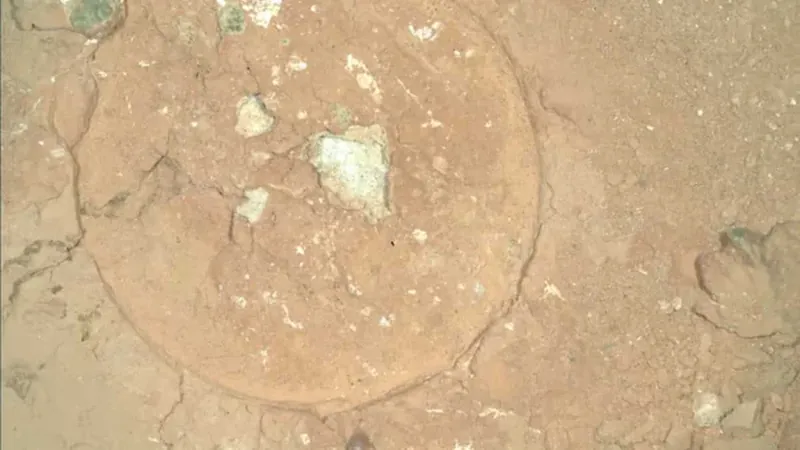
Unveiling Mars' Mysteries: Perseverance Rover Discovers Striking Green Spots in Rock Formation
2024-10-31
Author: Yu
Introduction
NASA's Perseverance rover has once again captivated scientists with its latest discovery on the Red Planet—greenish spots embedded within a Martian rock. This intriguing finding emerged from the sharp eyes of the rover's SHERLOC WATSON camera, which captured a nighttime mosaic image of the Malgosa Crest abrasion patch in the region known as "Serpentine Rapids."
The Discovery
In the remarkable photograph, the green spots are accompanied by contrasting white and black marks. To further investigate the composition of the rock, Perseverance created a five-centimeter-wide abrasion patch on an outcrop dubbed "Wallace Butte." Among these formations, the significant green spot measures approximately two millimeters (about 0.08 inches) in diameter, located in the upper left portion of the image.
Coloration on Earth vs. Mars
On Earth, the coloration of rocks is often attributed to oxidized iron, which also imparts a reddish hue similar to that of blood. The green tinge seen in various terrestrial rocks typically arises when liquid water seeps through sediment, crystalizing and undergoing chemical transformations. This process can convert oxidized iron to its reduced form, generating the distinct green coloration.
Speculations of Color Shift
Interestingly, the mechanisms responsible for such a color shift in Martian rocks remain speculative. On Earth, this reduction reaction can arise from microbial activity or decomposing organic matter. Alternatively, chemical interactions between sulfur and iron can facilitate this transformation without biological influences. However, the Perseverance rover faced significant challenges in positioning its SHERLOC and PIXL instruments directly over the green spot for more precise analysis, leaving scientists puzzled about the origin of this Martian anomaly.
Other Discoveries
In addition to the enigmatic green spots, the rover also captured an image of a remarkable black-and-white striped rock while navigating the steep terrains of the Jezero Crater. Named Freya Castle, this peculiar rock formation is unlike any other encountered on Mars, showcasing a stark contrast to the underlying bedrock. Scientists speculate that as Perseverance continues its ascent through the crater, it may discover more unique geological formations.
Implications for Life on Mars
While these extraordinary findings raise further questions regarding the geological history of Mars, they also reignite conversations about the planet's potential for hosting ancient microbial life. Could these green hues imply the presence of past aquatic environments or even microbial activity? The quest for answers continues as Perseverance drills deeper into Mars' secrets.
Conclusion
Stay tuned as we monitor Perseverance’s journey—a mission that could reveal the untold stories of our neighboring planet and perhaps provide clues about the origins of life beyond Earth!

 Brasil (PT)
Brasil (PT)
 Canada (EN)
Canada (EN)
 Chile (ES)
Chile (ES)
 España (ES)
España (ES)
 France (FR)
France (FR)
 Hong Kong (EN)
Hong Kong (EN)
 Italia (IT)
Italia (IT)
 日本 (JA)
日本 (JA)
 Magyarország (HU)
Magyarország (HU)
 Norge (NO)
Norge (NO)
 Polska (PL)
Polska (PL)
 Schweiz (DE)
Schweiz (DE)
 Singapore (EN)
Singapore (EN)
 Sverige (SV)
Sverige (SV)
 Suomi (FI)
Suomi (FI)
 Türkiye (TR)
Türkiye (TR)